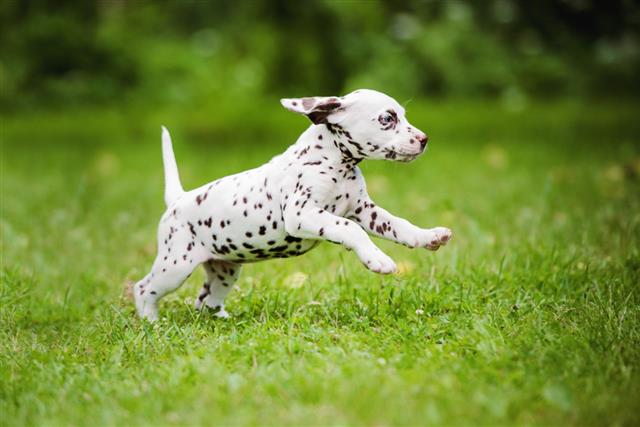
If you happen to take a peek at life expectancy of dogs by breed, you will find that some dogs may live a longer life than the others. Thus, make sure you take into consideration the average live expectancy of dogs before getting home one. Let us have a look at a chart in the following article that will give you an approximate idea about the lifespan of dogs.
After bringing home a tiny pup, we simply assume our canine friend to be an inseparable part of our lives. Dogs are living creatures and thus, death is inevitable. Certain dog breeds tend to have a longer lifespan than other dogs. Thus, some may even outlive their owners if they were too old when they brought them as a pet. And in some cases, the dog you got as your 5th birthday present may die just after you complete your college. No one likes losing their pet. Our canine friends become an integral part of our lives and we cannot imagine a life without them.
Before adopting a canine pet, one normally does not consider the life expectancy. Only when the animal begins to show signs of aging, do we start worrying about the lifespan of dogs. In the following paragraphs, we shall have a look at the average life expectancy of dogs that will be useful to you when considering a breed as a pet.
Lifespan of Dogs: An Overview
There are several factors that together contribute to the average life expectancy of dogs. The life expectancy has increased dramatically since the past few decades with the advancement in veterinary science as well as better diet provided to dogs. A dog may have a longer life than other breeds due to his genes. They are just genetically programmed to live longer than the other dog breeds. Small dog breeds have been found to live 10 years longer than big dogs. This may be because a large dog has to put in more energy to perform his daily functions. Neutered and sprayed dogs are found to live longer than those who are not. Female dogs are found to survive a year or two longer than the male dogs. Going in for a pure breed dog will find you addressing a long list of health issues in the long run. Mixed breed dogs tend to have lesser health issues and therefore, live longer than pure breed dogs. Good dog care and nutrition will also contribute to a longer lifespan of a dog. A dog that is mentally and physically active, alert and exercised will live longer than the dog who lives a quiet, sedentary life. Owners who take their pets regularly for veterinary check ups, also survive longer than those whose health issues are not addressed sooner.
Life Expectancy of Dogs: Chart
Many people believe that a dog ages about seven years in terms of one year in human life. However, this may not hold true as dogs age faster as pups and then tend to slow down their aging process as they mature. The breeder, living conditions, diet, exercise, breed health and lifestyle, all contribute towards the dog’s life expectancy. Just like humans, all dogs are different. You may find one dog healthy and active all his life. Another dog maybe plagued with health issues and will need extra care and attention. It is just based on each characteristic and one cannot say for sure how long will a dog live. In the following chart, we shall list out the dog’s average life expectancy by breed. This will give you an overall idea as to which dog lives the longest and which has the shortest life span.
| Name of Dog Breed | Average Life Expectancy |
| Affenpinscher | 10.2 years |
| Afghan Hound | 12.0 years |
| Airedale Terrier | 11.2 years |
| Akita | 10.4 years |
| American Eskimo Dog | 14.4 years |
| American Foxhound | 10.3 years |
| Basenji | 10.0 years |
| Basset Hound | 12.8 years |
| Beagle | 13.3 years |
| Bearded Collie | 12.3 years |
| Bedlington Terrier | 14.3 years |
| Bernese Mountain Dog | 7.0 years |
| Black and Tan Coonhound | 10.0 years |
| Black Russian Terrier | 10.0 years |
| Bloodhound | 10.0 years |
| Border Collie | 13.0 years |
| Border Terrier | 13.8 years |
| Borzoi | 10.5 years |
| Bouvier des Flandres | 10.0 years |
| Boxer | 10.4 years |
| Briard/ Berger de Brie | 10.0 years |
| Brittany | 10.2 years |
| Brussels Griffon/ Griffon Bruxellois | 10.0 years |
| Bull Terrier | 12.9 years |
| Bulldog | 6.7 years |
| Bullmastiff | 8.6 years |
| Cairn Terrier | 13.2 years |
| Cavalier King Charles Spaniel | 10.7 years |
| Chesapeake Bay Retriever | 10.0 years |
| Chihuahua | 13.0 years |
| Chinese Crested Dog | 10.5 years |
| Chinese Shar-pei | 8.2 years |
| Chow Chow | 13.5 years |
| Cocker Spaniel | 12.5 years |
| Corgi | 11.3 years |
| Curly-Coated Retriever | 8 years |
| Dachshund | 12.2 years |
| Dalmatian | 13.0 years |
| Doberman Pinscher | 9.8 years |
| English Cocker Spaniel | 11.8 years |
| English Setter | 11.2 years |
| English Springer Spaniel | 13.0 years |
| English Toy Spaniel | 10.1 years |
| Field Spaniel | 10.0 years |
| Flat-Coated Retriever | 9.5 years |
| German Shepherd | 10.3 years |
| German Shorthaired Pointer | 12.3 years |
| Glen of Imaal Terrier | 13.0 years |
| Golden Retriever | 12.0 years |
| Gordon Setter | 11.3 years |
| Great Dane | 8.4 years |
| Great Pyrenees/ Pyrenean Mountain Dog | 9.0 years |
| Greyhound | 13.2 years |
| Ibizan Hound | 10.0 years |
| Irish Red and White Setter | 12.9 years |
| Irish Setter | 11.8 years |
| Irish Water Spaniel | 10.0 years |
| Irish Wolfhound | 6.2 years |
| Jack Russell Terrier | 13.6 years |
| Japanese Chin | 8.0 years |
| Keeshond | 12.0 years |
| Komondor | 10.0 years |
| Kuvasz/ Hungarian Kuvasz | 10.0 years |
| Labrador Retriever | 12.6 years |
| Lurcher | 12.6 years |
| Maltese | 14.0 years |
| Miniature Dachshund | 14.4 years |
| Miniature Poodle | 14.8 years |
| Miniature Schnauzer | 14.0 years |
| Newfoundland | 9.0 years |
| Norfolk Terrier | 10.0 years |
| Old English Sheepdog | 11.8 years |
| Pekingese | 13.3 years |
| Pembroke Welsh Corgi | 13 years |
| Pharaoh Hound | 11.0 years |
| Pomeranian | 15 years |
| Pug | 13.5 years |
| Random-bred/ Mongrel | 13.2 years |
| Rhodesian Ridgeback | 9.1 years |
| Rottweiler | 9.8 years |
| Rough Collie | 12.2 years |
| Saluki | 10.0 years |
| Samoyed | 11.0 years |
| Schipperke | 14.1 years |
| Scottish Deerhound | 9.5 years |
| Scottish Terrier | 12.0 years |
| Shetland Sheepdog | 13.3 years |
| Shih Tzu | 13.4 years |
| Siberian Husky | 12.1 years |
| Skye Terrier | 10 years |
| Staffordshire Bull Terrier | 10.0 years |
| Standard Poodle | 12.0 years |
| Tibetan Terrier | 14.3 years |
| Toy Poodle | 14.4 years |
| Viszla | 12.5 years |
| Weimaraner | 10.0 years |
| Welsh Springer Spaniel | 11.5 years |
| Welsh Terrier | 10.0 years |
| West Highland White Terrier | 12.8 years |
| Whippet | 14.3 years |
| Wire Fox Terrier | 13.0 years |
| Wirehaired Pointing Griffon | 10.0 years |
| Yorkshire Terrier | 12.8 years |
From the preceding table, you can get a fair idea of the average life expectancy of dogs by breed. The lifespan mentioned above is just tentative. A dog may live a few years longer or shorter than the average life expectancy mentioned in the table. Thus, one cannot exactly say when it will be time to say goodbye forever to their dear pet. But, one can always take good care of their pet, so that whenever it is time for them to bid farewell, they leave us with a satisfied and content look. Hope the above information has helped you get a fair idea of the approximate lifespan of each dog breed. All we can do as pet owners is to allow the dogs to live a life full of happiness, enjoyment and love.




























